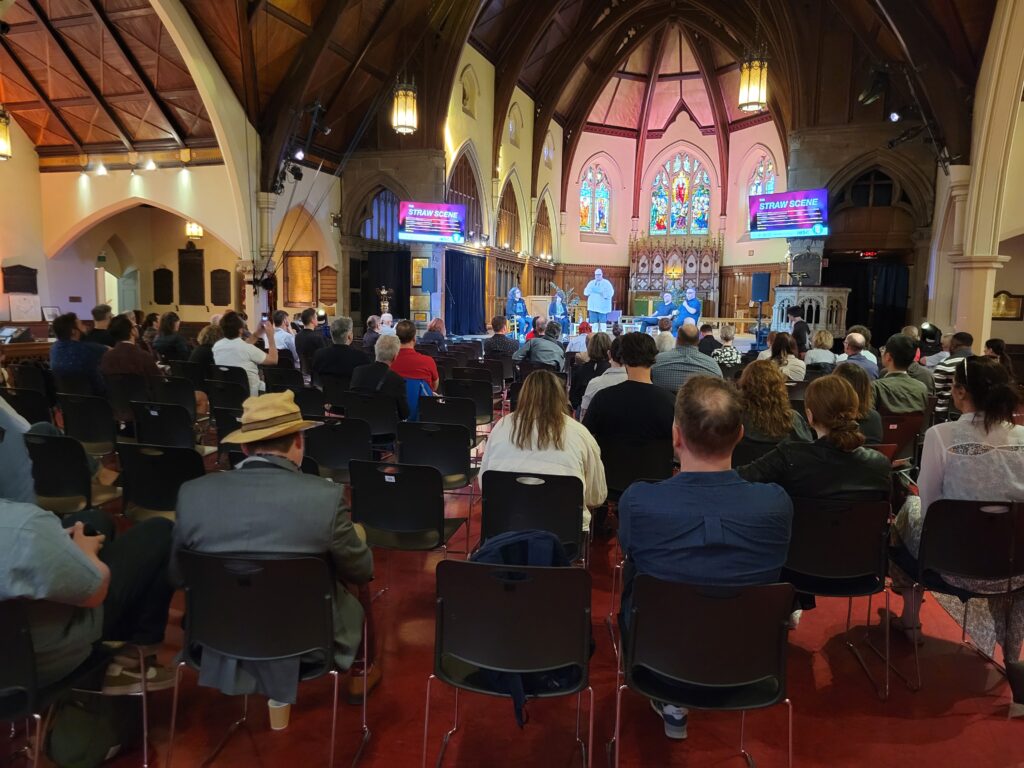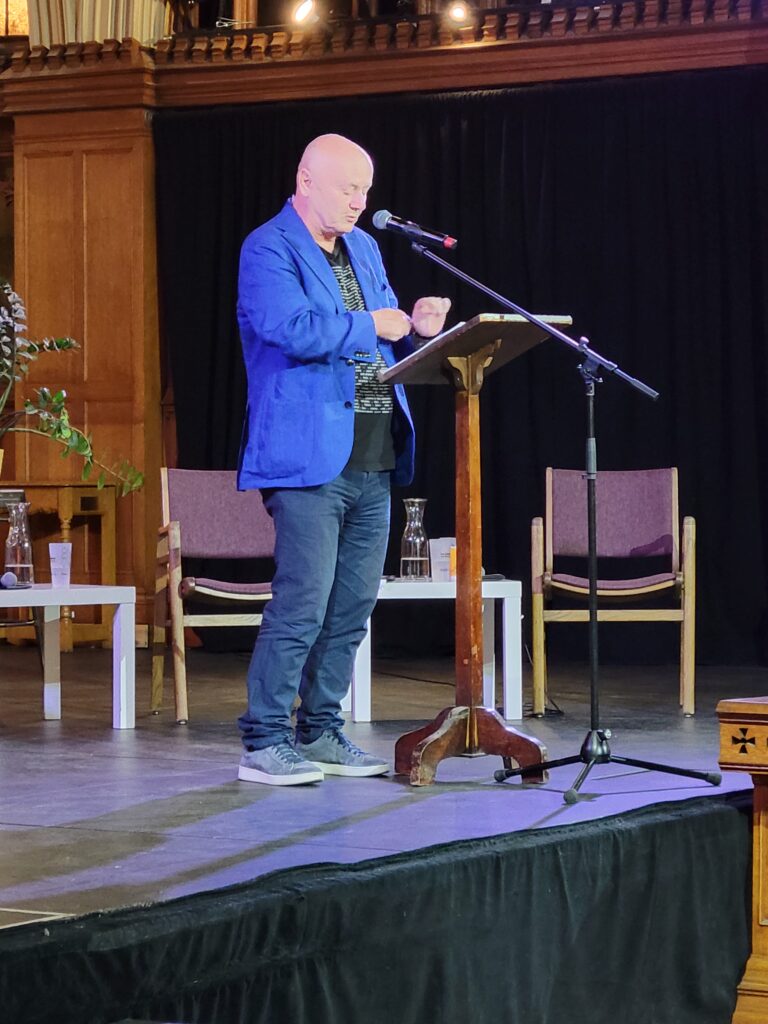Centre St. Jax. Monday June 14 2024
The Montreal “Straw Scene” symposium in honour of Will Straw’s pending retirement from McGill University, was an extended discussion of “scene.” This is a collecting and organizing concept, but a less abstract term than “assemblage” as Georgina Born notes. This caught my attention in relation to my interest in “situation” as both pragmatic, tangible and intangible objects of research. All these terms require a decision about the scale of events, about where to draw the limits of a scene or situation or assemblage, as much as a decision is needed about how to characterize a scene, situation or assemblage. To call something a “scene” – the hiphop scene, the experimental music scene – means refering to something clearly visible but whose limits are elastic.

What time, what time and space is a scene? Anouk Bélanger noted that scenes spatailise cultural analysis. Drawing on Will Straw, she identified scenes as recurring congregations at a specific plac(s), as well as movement to and between places, supported by institutions or institutional forms including media, as well as being dispersed across that geography of places and institutions and the web of characteristic activities or foci. Scene is related to concepts such as lifestyle and may define a way of life, uniting both work and leisure. Rather than a purely theoretical term, scene is a “working-concept” or “conceptual tool” (concept-outil) according to Gérôme Guibert. The literature and engagement with cultural scenes seems impoverished when this becomes elevated as “scene theory” à la assemblage theory. Geoffrey Stahl comments that “Scenes are feral…resistant to theory.”
Scene offers a pragmatics of cultural ecosystems that avoids reducing cultural dynamics ro objects. Naming a scene is an attempt to make sense of the mobility and connection of objects and forms in culture. Scenes unite the local “scene” with its translocal circulation. The scenes of a city enliven urban life and are, perhaps, at the heart of urbanity as both intimately shared and collectively available.
Scene also transcends academic theory: participants, musicians, artists and cultural entrepreneurs all claim to know what a scene is. It is a shared, fuzzy object. Insiders engage and debate the definitions and contours of a scene as experts in local life and practices.

Geoff Stahl noted that scene has in many ways replaced the terminology of “subcultures” which, however, had much more formal theoretical foundations in Stuart Hall’s and Ian Chamber’s Marxist studies of superstructures and the reproduction of labour, notably the masculine-dominated working class of the British Midlands. Scene, Stahl comments, unites practice, place and style, capturing the aleatory and porous quality of cultural forms and pursuits.
The interest of scene is that it captures and does generalize across heterodox elements without flattening them. Rather, “scene” is an embrace of particularity and diversity and the co-constitution of these objects and practices. It asserts that these are drawn together in a larger whole, often named from within using the nomenclature of participants. As an organic clustering of bodies, practices, language, visual and musical representations, scene builds up and from inside-out rather than only being discerned through an analysis or second order theorizing. If the participants do not acknowledge the reality of a scene, it cannot be said to exist. Similarly, without the affect and passion for the shared activities of a local scene, it ceases to be a scene and is merely a commercialized festival attracting tourists, the uninitiated and nostalgic.
-Rob Shields (Univ. of Alberta)
Further Reading
Scene:
Straw, W. “Cultural Production and the Generative Matrix: A Response to Georgina Born.” Cultural Sociology 4, no. 2 (July 2010): 209–16. https://doi.org/10.1177/1749975510368472.
Straw, Will. “Some Things a Scene Might Be: Postface.” Cultural Studies 29, no. 3 (May 4, 2015): 476–85. https://doi.org/10.1080/09502386.2014.937947.
Situation:
Brown, Matthew J. “The Concept of Situation in John Dewey’s Logic and Philosophy of Science.” Hopos: The Journal of the International Society for Th eHistory of the Philosophy of Science, 2017, 16.
Clarke, A.E., C. Friese, and R.S. Washbrun. Situational Analysis: Grounded Theory after the Interpretive Turn. Thousand Oaks, CA: SAGE Publications, 2017.
Knorr Cetina, K. “The Sythetic Situation: Interactionism for a Global World.” Symbolic Interaction 32, no. 1 (2011): 61–87.
Assemblage:
McFarlane, C. “Translocal Assemblages: Space, Power and Social Movements.” Geoforum 40, no. 4 (July 2009): 561–67. https://doi.org/10.1016/j.geoforum.2009.05.003.
Müller, Martin. “Assemblages and Actor-Networks: Rethinking Socio-Material Power, Politics and Space.” Geography Compass 9, no. 1 (2015): 27–41. https://doi.org/10.1111/gec3.12192.
Space and Culture 1999 Assemblages Issue in triple issue, 6-7-8.







